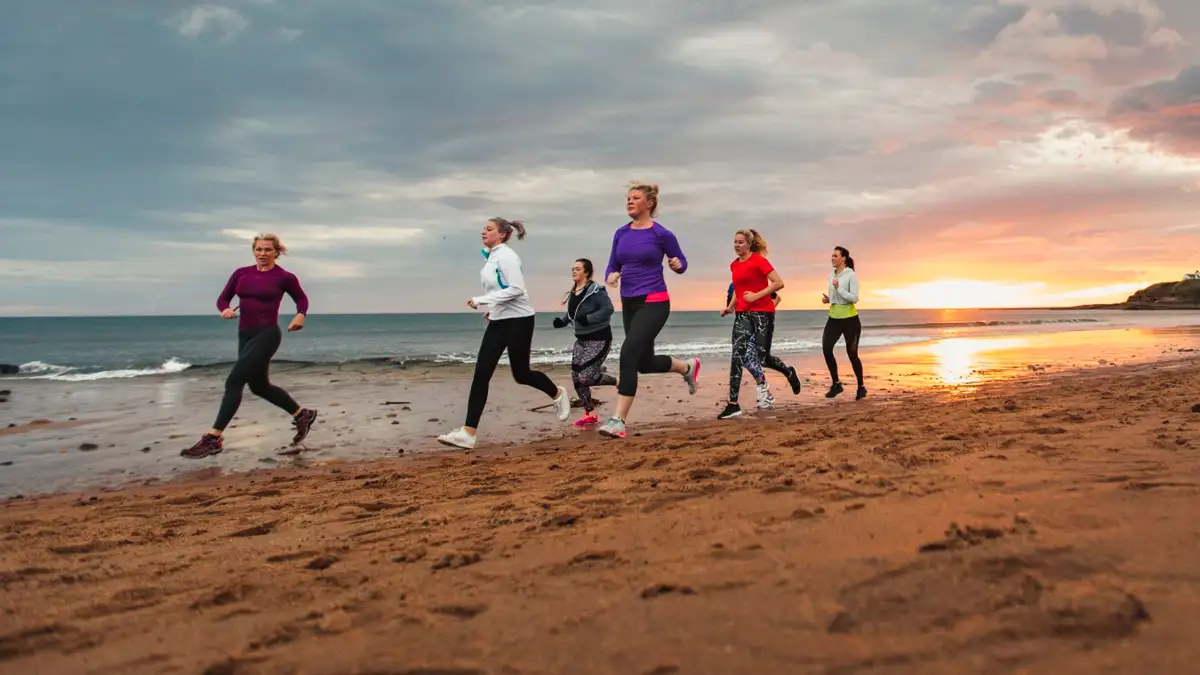
Slimming Down: Effective Strategies on How to Reduce Waist Size
Understanding Waist Size and Health
Waist size is a key indicator of health, as visceral fat (fat around internal organs) is more harmful than subcutaneous fat (under the skin). A waist circumference above 35 inches for women or 40 inches for men increases health risks, per the CDC. Reducing waist size requires a holistic approach, as spot reduction (targeting only belly fat) is a myth. Instead, a combination of fat loss, muscle toning, and lifestyle changes shrinks the waist effectively.
In 2025, wearable tech like smartwatches and AI-driven apps (e.g., Fitbit, MyFitnessPal) provide real-time data on calorie burn, body composition, and progress, making it easier to track and adjust your plan. This guide focuses on sustainable strategies, avoiding quick fixes that lead to rebound weight gain. Consult a doctor before starting, especially if you have medical conditions.
1. Optimize Your Exercise Routine
Exercise is critical for burning calories, building muscle, and reducing waist size. A mix of cardio, strength training, and core-focused exercises maximizes fat loss and tones the midsection.
Cardio for Fat Loss
Cardio burns calories, helping create the calorie deficit needed for fat loss. Aim for 150-300 minutes of moderate-intensity cardio weekly, as recommended by the American Heart Association.
- Best Moves:
- Running/Jogging: Burns ~300-400 calories per 30 minutes (5-6 mph for a 150-pound person). Try HIIT: 1-minute sprints, 2-minute jogs.
- Cycling: Burns ~250-350 calories per 30 minutes (12-14 mph). Use 2025’s virtual cycling platforms like Zwift for motivation.
- Jump Rope: Burns ~300-400 calories per 30 minutes. Smart jump ropes track reps in real-time.
- Tip: Use a 2025 smartwatch to keep your heart rate at 60-80% of max for optimal fat burning. Aim for 3-5 sessions weekly.
Strength Training for Metabolism
Strength training builds muscle, which boosts metabolism, helping burn fat even at rest. Full-body workouts engage multiple muscle groups, including the core, for a slimmer waist.
- Best Moves:
- Deadlifts: Engage core, glutes, and back. Do 3 sets of 10-12 reps.
- Squats: Target lower body and core. Try 3 sets of 12-15 reps with dumbbells.
- Plank Variations: Hold a plank for 30-60 seconds, 3 sets, to strengthen abs.
- Tip: Use apps like Strong or VR workouts (e.g., Supernatural) for guided routines. Train 2-3 times weekly.
Core Exercises for Toning
While core exercises don’t burn fat directly, they strengthen and define abdominal muscles, enhancing waist appearance.
- Best Moves:
- Bicycle Crunches: Target obliques; 3 sets of 15 reps per side.
- Russian Twists: Use a light weight for 3 sets of 20 twists.
- Leg Raises: Strengthen lower abs; 3 sets of 12-15 reps.
- Tip: Incorporate core work 2-3 times weekly, using 2025’s AR coaching apps for proper form.
Sample Weekly Plan:
- Monday: 30-min jog + 15-min core (bicycle crunches, planks).
- Wednesday: 30-min cycling + 20-min strength (squats, deadlifts).
- Friday: 20-min jump rope + 15-min core (Russian twists, leg raises).
Calories Burned: ~1,500-2,500 weekly, depending on intensity and body weight.
2. Focus on Nutrition for Fat Loss
Nutrition is the cornerstone of reducing waist size, as you can’t out-exercise a poor diet. A calorie deficit (burning more calories than you consume) is key, but quality matters as much as quantity.
Create a Calorie Deficit
To lose 1 pound of fat (~3,500 calories), aim for a daily deficit of 500-750 calories through diet and exercise. For a 150-pound person, this means consuming ~1,500-1,800 calories daily, adjusted for activity level.
- Track Intake: Use 2025’s AI-driven apps like Lifesum or MyFitnessPal to log meals and calculate deficits.
- Tip: Avoid extreme deficits (<1,200 calories for women, <1,500 for men), as they can slow metabolism.
Prioritize Whole Foods
Whole foods reduce bloating and support fat loss, unlike processed foods high in sugar or sodium.
- Sample Meal Plan (1,600 calories):
- Breakfast: Greek yogurt with berries, chia seeds (~300 calories).
- Lunch: Grilled chicken salad with avocado, olive oil dressing (~400 calories).
- Dinner: Baked salmon, quinoa, steamed broccoli (~500 calories).
- Snacks: Almonds, apple slices (~200 calories).
- Macronutrients: Aim for 40% carbs, 30% protein, 30% fat, per dietitian recommendations.
- Tip: Use AI meal planners to customize portions based on your goals.
Stay Hydrated
Water reduces bloating and supports metabolism. Aim for 8-12 cups daily, more if exercising intensely.
- Tip: Use a smart water bottle like HidrateSpark to track intake. Add lemon or cucumber for flavor.
Limit Bloating Foods
High-sodium, sugary, or carbonated foods can cause water retention, making your waist appear larger.
- Avoid: Soda, processed snacks, excessive alcohol.
- Choose: Low-sodium options, whole grains, lean proteins.
- Tip: Apps like Yuka scan foods for sodium and sugar content, popular in 2025.
3. Adopt Lifestyle Changes
Lifestyle habits significantly impact waist size, from sleep to stress management.
Prioritize Sleep
Poor sleep disrupts hormones like ghrelin and leptin, increasing hunger and fat storage. Aim for 7-8 hours nightly.
- Tip: Use 2025’s wearable tech (e.g., Whoop) to track sleep quality. Create a bedtime routine with no screens 1 hour before bed.
Manage Stress
Chronic stress raises cortisol, promoting abdominal fat storage. In 2025, stress is amplified by digital overload and fast-paced lifestyles.
- Practices: 10-minute daily meditation (use apps like Calm) or deep breathing (4-7-8 technique).
- Tip: Wearables monitor stress via heart rate variability, suggesting relaxation when needed.
Stay Consistent
Consistency trumps perfection. Small, daily changes—like walking 10,000 steps or swapping soda for water—add up.
- Tip: Join virtual fitness communities on platforms like X for accountability and motivation.
4. Strengthen Mental Resilience
Mindset is critical for sustained progress. In 2025, mental health is a key focus in fitness, with tools to support motivation and self-compassion.
Set Realistic Goals
Aim for a 1-2-inch waist reduction in 4-6 weeks, depending on starting point. Rapid weight loss is unsustainable and often unhealthy.
- Tip: Use apps like Goalify to track progress and celebrate small wins, like completing a week of workouts.
Practice Self-Compassion
Avoid self-criticism if progress is slow. Focus on how you feel—energized, stronger—rather than just measurements.
- Tip: Journal daily (use apps like Day One) to reflect on improvements in mood or stamina.
Stay Motivated
Visualize your goals or join group challenges to stay engaged. In 2025, VR fitness platforms like Supernatural make workouts fun and immersive.
- Tip: Share progress on X to connect with others and stay accountable.
Sample 4-Week Plan to Reduce Waist Size
To reduce waist size, combine the above strategies into a structured plan. Here’s a sample for a 150-pound person:
Week 1: Foundation
- Exercise: 3x 30-min cardio (jogging, ~900 calories total), 2x 20-min strength (squats, planks), 2x 10-min core.
- Nutrition: 1,600-calorie diet, replace processed snacks with fruit, drink 8 cups water.
- Lifestyle: 7 hours sleep, 5-min daily meditation.
- Goal: Establish habits, lose ~0.5-1 pound.
Week 2: Build Intensity
- Exercise: 4x 35-min cardio (cycling with HIIT, ~1,200 calories), 2x 25-min strength, 3x 10-min core.
- Nutrition: Increase veggies (3 servings daily), limit sugar to 25g.
- Lifestyle: 7-8 hours sleep, 7-min meditation.
- Goal: Burn ~2,000 calories, lose ~0.5-1 pound.
Week 3: Optimize
- Exercise: 4x 40-min cardio (running, ~1,600 calories), 3x 25-min strength, 3x 12-min core.
- Nutrition: Balance macros (40% carbs, 30% protein, 30% fat), eliminate one unhealthy habit (e.g., soda).
- Lifestyle: 8 hours sleep, 10-min mindfulness.
- Goal: Burn ~2,500 calories, lose ~1 pound.
Week 4: Sustain
- Exercise: 5x 40-min cardio (mix of jump rope, cycling, ~2,000 calories), 3x 30-min strength, 3x 15-min core.
- Nutrition: Maintain balanced diet, focus on consistency.
- Lifestyle: Continue sleep and stress management.
- Goal: Lose ~1-2 inches from waist, sustain habits.
Total Expected Loss: ~2-4 pounds, ~1-2 inches off waist, depending on starting point.
Safety and Long-Term Success
- Consult a Professional: Get medical clearance if new to exercise or managing health conditions.
- Avoid Extremes: Don’t drop below 1,200 calories (women) or 1,500 (men) to prevent nutrient deficiencies.
- Monitor Progress: Measure waist weekly, but focus on non-scale victories like energy or clothing fit.
- Sustain Habits: After 4 weeks, maintain 3-4 workouts, balanced nutrition, and mindfulness for ongoing results.
The Bigger Picture: Why Reducing Waist Size Matters
Reducing waist size is about more than aesthetics—it’s about health, confidence, and vitality. In 2025, with holistic wellness trending, this goal aligns with the focus on physical and mental well-being. Exercise, nutrition, and lifestyle changes not only slim your waist but also boost energy, reduce stress, and lower disease risk. Tools like AI apps, VR workouts, and wearables make the journey engaging and data-driven.



